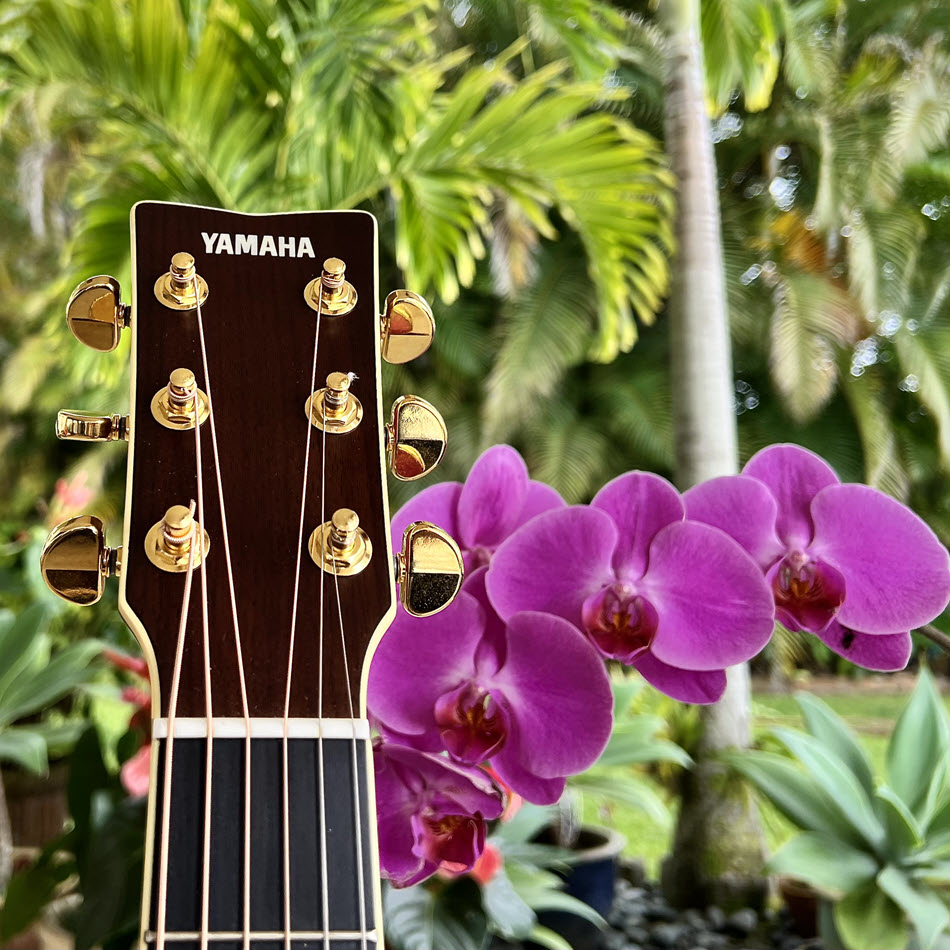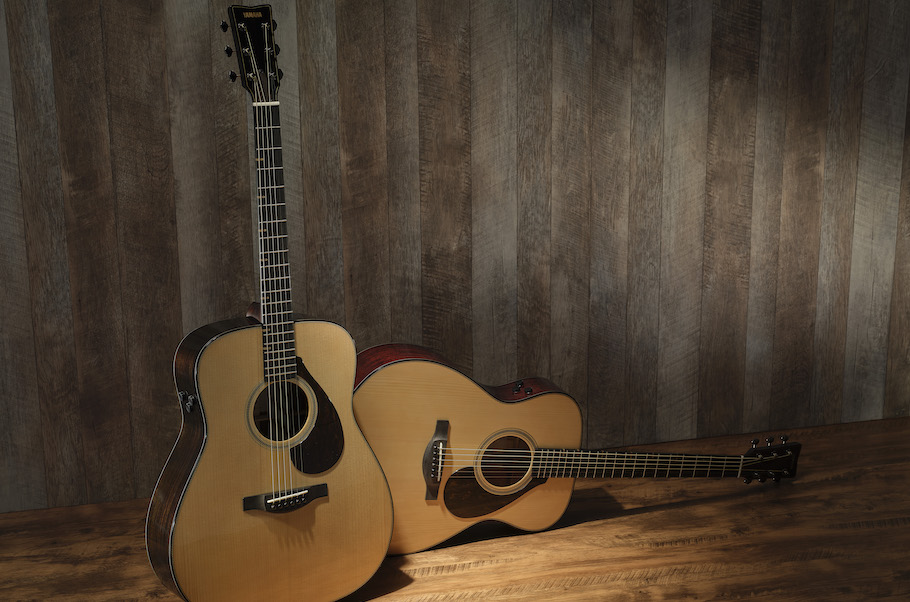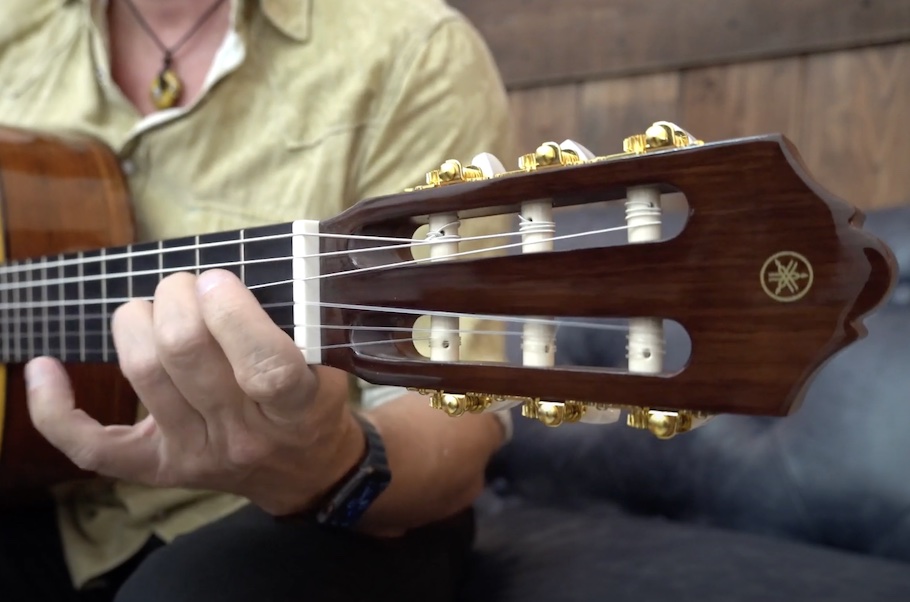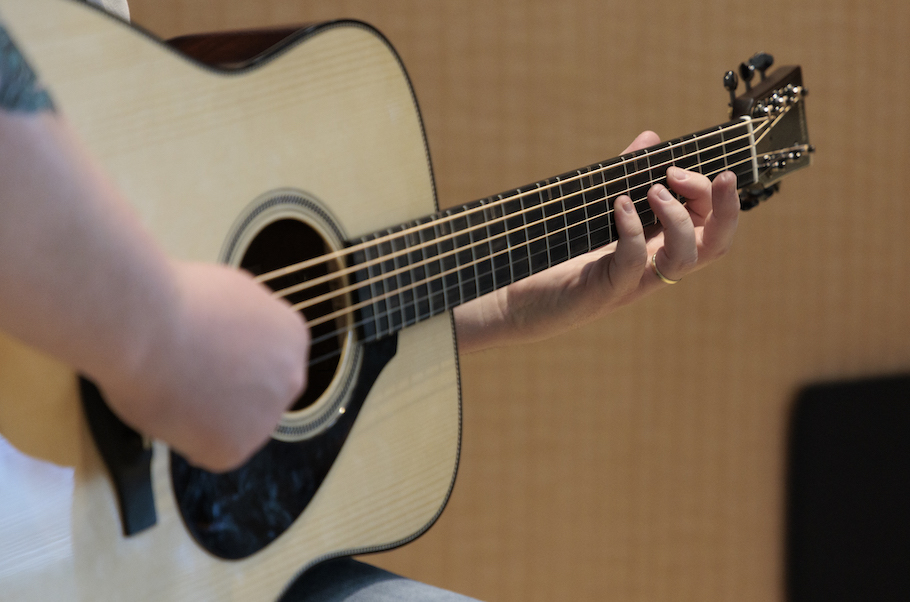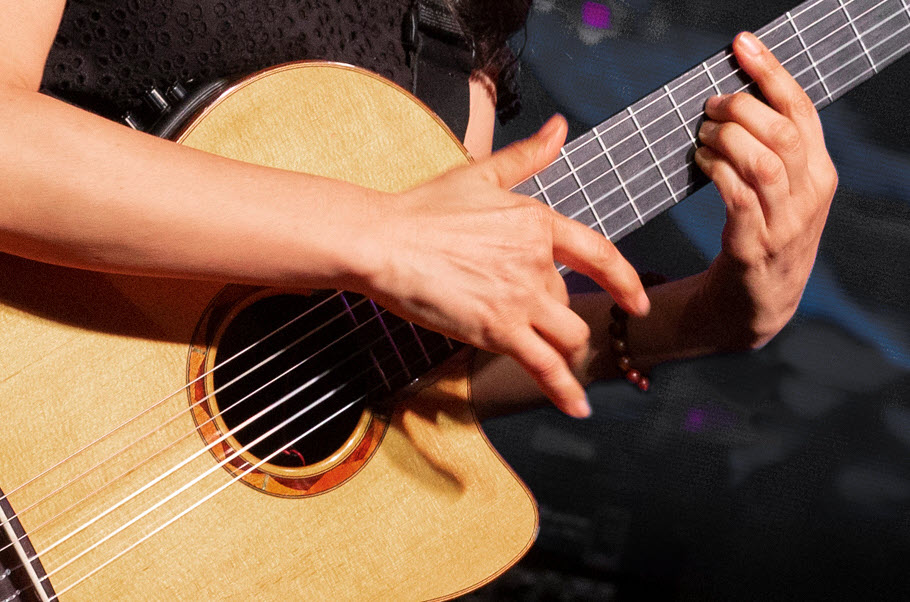Tagged Under:
How Yamaha TransAcoustic Guitar Technology Works
The magic behind chorus and reverb effects in the air.
When people play a Yamaha TransAcoustic (TA) guitar for the first time, their initial response is typically surprise and delight. Then they wonder how Yamaha managed to get chorus and reverb effects out of an unplugged acoustic guitar.
In this posting, I’ll tell you how they did it.
A Technology That Began Inside a Piano
Yamaha engineers originally developed TransAcoustic technology for pianos more than 20 years ago, though the first of these instruments didn’t debut until 2014. “The idea for the technology had been at Yamaha since about 2000,” says Shingo Ekuni, who was on the original design team for the TA guitar and is now a product manager for acoustic guitars at Yamaha. Today, the product is in its second generation, with TransAcoustic™ TA2 models available both in grand and upright versions. These are genuine pianos that have been modified with TransAcoustic components that use its soundboard to naturally amplify digital sounds — in effect, turning the instrument into an acoustic speaker.

Here’s how it works: First, touchless optical sensors mounted under the keys convert every keystroke and pedal motion into high-resolution digital data. That data is then routed to a sound module that offers various user-selectable keyboard and instrument sounds, including harpsichord, organ, electric piano, strings and more.
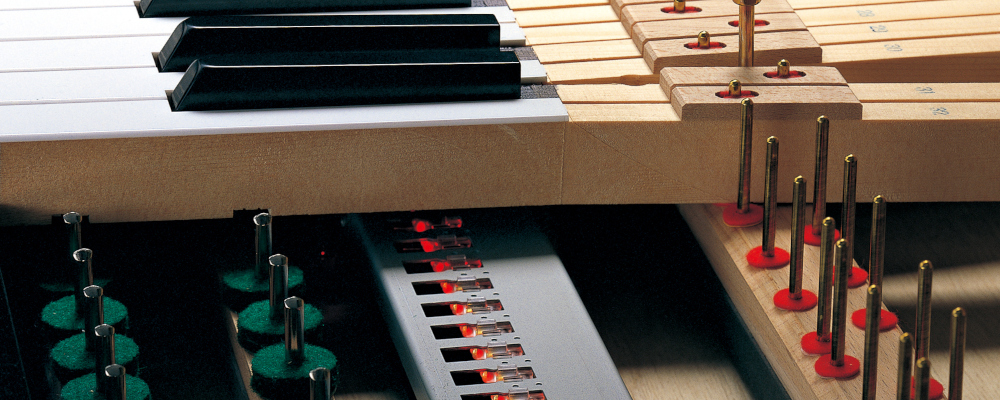
The data is also converted back to an analog signal that goes through an amplification stage before being sent to two transducers attached to the piano’s soundboard. (A transducer is a device that changes energy from one form to another.) These transducers convert the electrical signal to sound waves, which cause the soundboard to vibrate like a speaker.
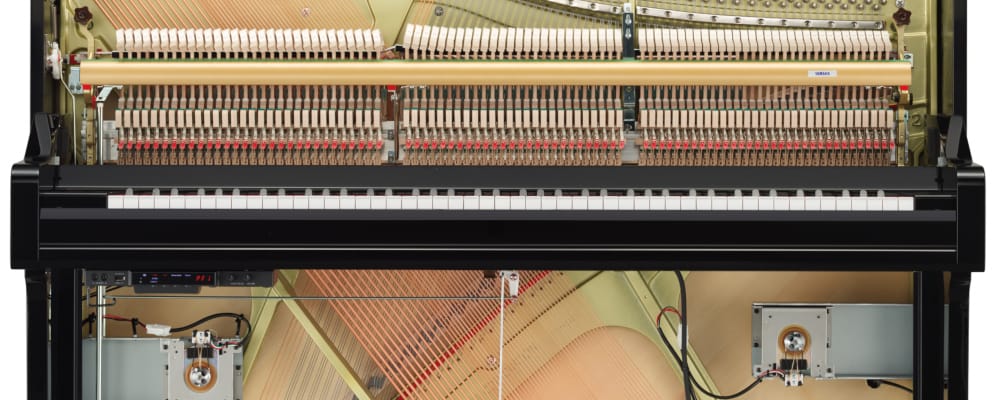
When the piano is placed in TransAcoustic mode, the hammers get blocked from hitting the strings, so all you hear (via connected speakers or headphones) is the digital instrument sound you selected. If you want to blend in the piano sound on top of it, you can switch the piano to Layer mode. You can also play the piano on its own acoustically.
Bringing the Concept to Guitar
The Yamaha engineers knew that if the TransAcoustic technology could work on a piano, it could work on an acoustic guitar, which also has a wood body and vibrating strings. However, because the surface area of a guitar’s body is much smaller than a piano soundboard, and because, unlike the piano, there’s no way to mute the guitar’s acoustic sound effectively, they decided on a different implementation: instead of trying to use it to substitute the sound of a different instrument, TA technology would be used to add effects to the natural sound of the guitar.
The first TransAcoustic guitars were the high-end LL-TA and LS-TA models, released in 2016. Their success led to TA versions of many of the company’s acoustic guitars, including the long-running FG and FS Series instruments — even the nylon-string CG.

A TransAcoustic guitar is, first and foremost, a guitar. Even if you never turned on the TA system, you’d still find it to be a quality instrument. In fact, if you see someone holding a TA guitar but not playing it, you’d probably never know it has this groundbreaking technology inside. If you noticed the three low-profile control knobs on the top side of the body, you’d likely think they were all part of a pickup system for onstage use.
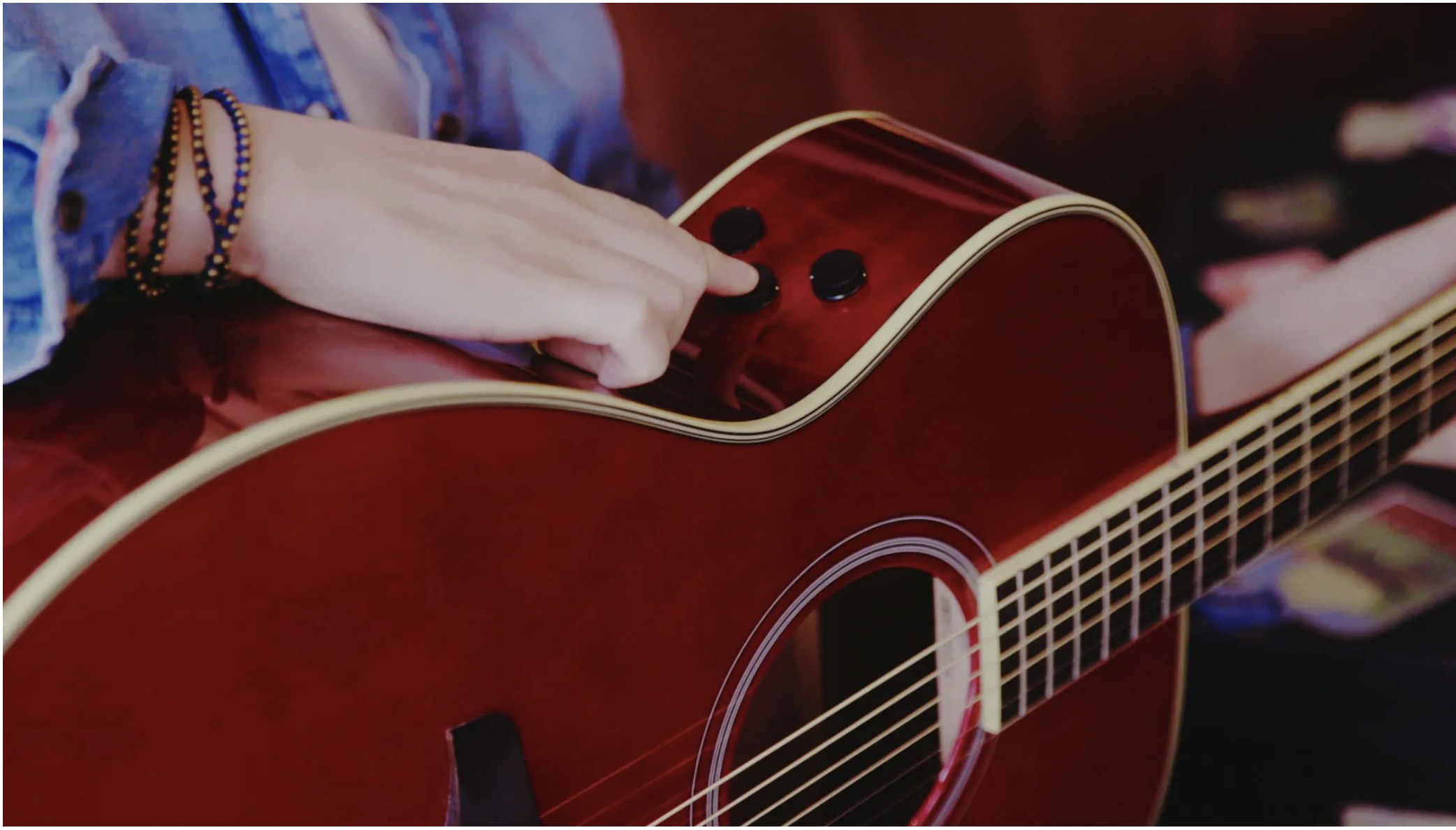
But you’d change your mind once you heard that person play the guitar, with reverb and/or chorus effects swirling in the air all around them as if by magic. (Those same effects, by the way, are routed to the instrument’s output jack via the built-in piezo pickup, so you’d hear them coming from the amp too, if the guitar was plugged in.)
How a TA Guitar Works
Here’s how a TransAcoustic guitar creates those effects: When the electronics are turned on, the string vibrations are captured by a piezo pickup in the bridge. From the pickup, the signal goes into a circuit board mounted inside the guitar. There, it’s converted to digital data and sent to a digital effects processor, then it gets converted back to analog before passing through an amplification stage.
Finally, the amplified signal gets sent into something that Yamaha calls an actuator — a small metal device attached to the inside surface of the back of the guitar.
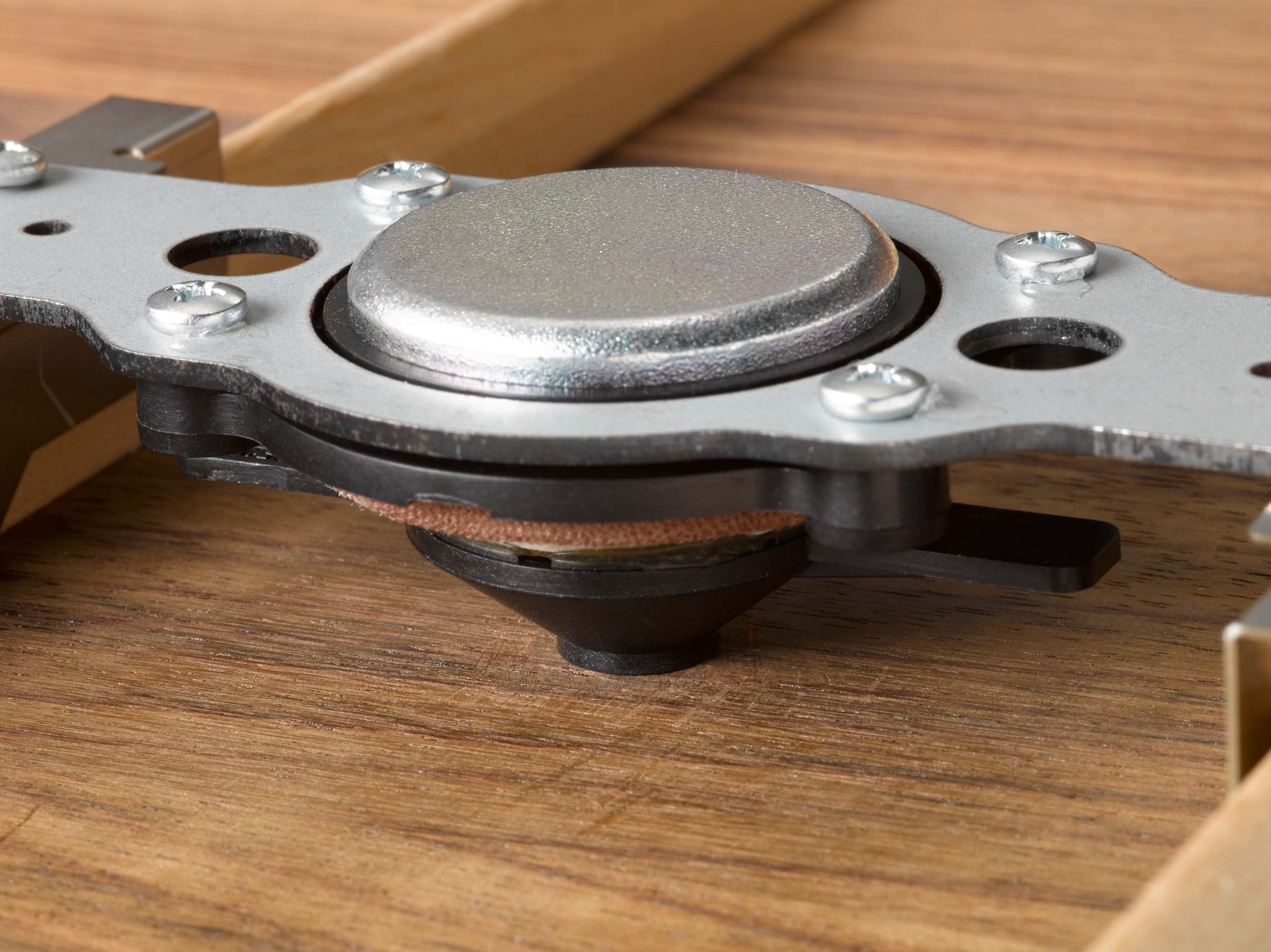
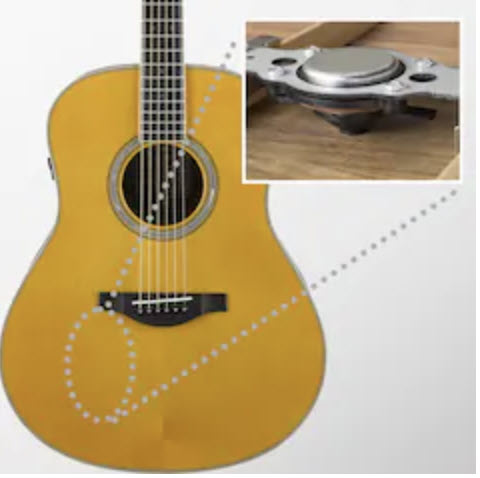
The actuator functions similarly to the transducers on the TA piano, turning the electrical signal into sound waves and transferring those vibrations to the entire guitar body, and from there, into the air. In essence, it causes the body of the guitar to function as a giant speaker. And because the guitar’s acoustic sound is also resonating through the body, the effects blend in with it in a natural-sounding way, creating an immersive experience for the guitarist.
By the way, plugging a guitar cable into the quarter-inch jack on the end-pin transforms a TA guitar into an acoustic-electric that you can connect to an amp, a PA system or a direct box — any device that accepts an instrument-level signal. The output features a mix of the guitar sound captured by the pickup and the TransAcoustic effects.
Dialing it In
To turn on a TA guitar’s effects, all you have to do is press and hold the center control knob for about a second. You won’t see any change on the outside of the instrument, but if you look in the sound hole, you’ll see a lit power indicator on top of the circuit board.
Once it’s on, you can choose between two types of reverb — Hall or Room — and you can vary the amount by the position of its control knob. A second control knob lets you dial in the desired amount of a chorus effect. You can have one or both effects on and balance their intensity to your taste, plus there’s a dedicated overall volume knob if you’re using the piezo pickup output. The entire TA system is powered by a pair of AA batteries. A handy energy-saver feature shuts off the power after 30 minutes of inactivity.
TransAcoustic guitars are quite possibly the most versatile guitars ever made. You can play it like a regular acoustic guitar without effects, or with the effects blending with the acoustic sound, or as an acoustic/electric with effects. Whichever way you use it, you’ll know you’re playing a unique and innovative instrument.
Check out these related blogs:
Discover Yamaha TransAcoustic Guitars
Which TransAcoustic Guitar is Right for Me?
MJ Ultra and the FG-TA TransAcoustic Guitar
“Breaking Amish” with My Yamaha FG-TA
How to Record TransAcoustic Guitar Effects
Click here for more information about Yamaha TransAcoustic guitars.










